Home Performance
forensic building envelope & indoor air quality analysis
do your house have cold rooms and you don't know why!
Green Construction Holmes Builders Home Performance Team is the one call. Our theory on how a building work are don’t work is supported by testing, which takes the guess work out.
Indoor Air Quality, Building Science, Forensic analyst and astute observation, not “legends” to determine what is happening or will happen in a building. Some of the equipments our home performance contractors used to diagnose a building is infrared camera and blower door test equipment to detect heat lost, moisture meter to locate potential mold and the list goes on. We don’t know every single detail of how everything works in the house, but we understand how things interact, and we know who to call for specific problems. Our Forensic Envelope Engineer explain what they have done and how equipment works, so the residents become and active partners in home performance in there home.
Buildings are no longer just four walls, a roof and a stove. They’ve evolved into tightly sealed, comfort chambers, with tricky equipment and plenty of toxic materials.
What causes sick building syndrome?
The term “sick house” is used when the exact cause of your symptoms can’t be identified. However, there are a variety of possible causes you can ask your doctor about.
The culprits behind it may include:
- buildings with poor ventilation, such as schools, offices, and homes
- high levels of dust
- tobacco smoke
- rooms with poor lighting
- outdated computer displays that cause eye strain
- the presence of mold or fungus
- formaldehyde (mostly found in wood furniture and floors)
- asbestos
- chemicals in the air from cleaning products
- pesticides
- carbon monoxide
- ozone from the use of printers and fax machines
- Radon – Mold – Lead Paint – Asbestos
- heat or low humidity
- insect or animal droppings
thermographic for homes
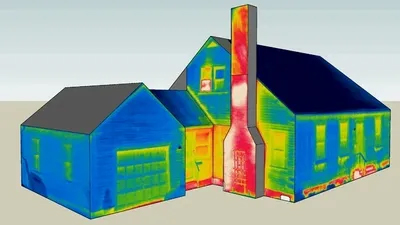
infrared inspection
Thermal Imaging for Energy Assessments & Home Inspection
Thermal imaging for air tightness and energy efficiency are important quality control measures when buying, building or renovating a home. Heat loss can account for up to 50% of total energy consumption in a building with causes ranging from air leakage through chimneys, attics and wall vents to badly sealed doorways and failing thermal windows, to missing insulation. Don’t be fooled by “hobby cameras” attached to a cell phone. Only professional equipment can produce professional results.
Ice Dam
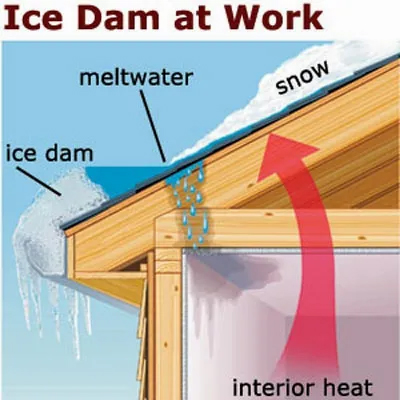
what does an ice dam look like?
Some ice dams cannot be seen because they are completely buried in snow, or because they may be higher on the roof or in the roof valleys (or both).
what causes ice dams?
The cycle of snow on your roof slowly melting and refreezing lower down on your roof.
Several factors can conspire to melt snow and cause ice dams. Poor attic insulation, lack of adequate attic ventilation, and warm-air leaks into your attic cause the roof deck to heat up from the underside and melt the snow on your roof. The water (melted snow) trickles down the roof and freezes as the temperatures fall below freezing, or when the water reaches a colder surface, like your overhangs, where there is no heated living space beneath. As the freeze-thaw cycle continues, the ice becomes thicker and thicker, eventually creating a small wall of ice – an ice dam. Future melting snow will stop behind the dam, with nowhere to drain off the roof. Not only does this pool of water eventually refreeze into more ice, but also the water can work its way under the shingles (or other roofing material). At this point, the water can leak into your home or building, and quickly cause damage to walls, ceilings, insulation, and other areas. Shingles are designed to shed water, not to hold water.
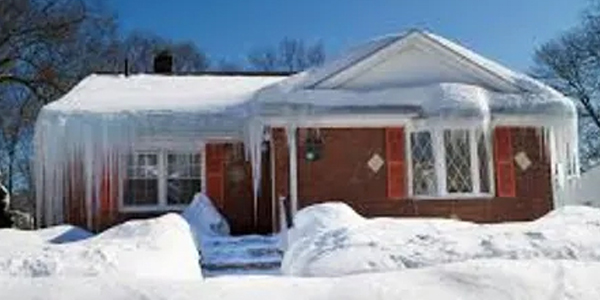
chicago ice dams cause by no air sealing

cause by poor attic insulation
mold
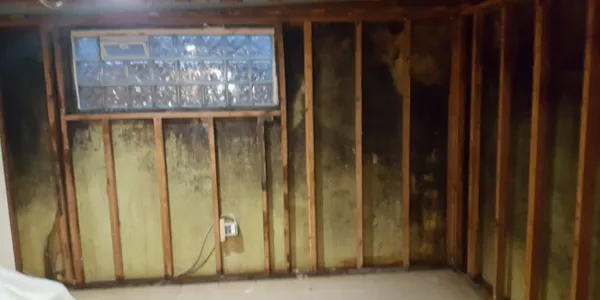
mold behind walls out of site out of mine
Moisture in buildings can be caused by leaking pipes, rising damp in basements or ground floors, or rain seeping in because of damage to the roof or around window frames. Mold growth is a coming place behind walls were moister intrude and organic material meets. Poor air movement or proper ventilation in the area alway seem to play a big part.
Research indicates 96% of homes have at least one type of indoor air quality issue. An indoor air quality (IAQ) monitor will report on the levels of common pollutants and other air conditions inside your home in real time

air scrubber / negative air machine
For optimal dust control, a simple box fan, sheets of plastic, paper and a vacuum cleaner just won’t cut it. The best-of-the-best contractors can capture and virtually eliminate remodeling dust and toxic using a Negative Air Machine. Negative Air Machine prevents employees and clients from breathing in toxins during and after the construction, and it also help work sites indoor air quality . Also known as a Air Scrubber, with a true HEPA filter is a device that contains the mold, dust, particles and odors within a workspace containment barrier. Most time allowing the homeowner to continue living comfortable in their home during the project.
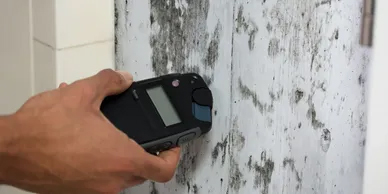
test for moister on drywall
This process of checking moisture issues apparent as discoloration or crumbling mean that the drywall has gone unchecked, and has already experienced a prolonged exposure to moisture.
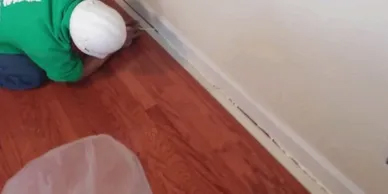
air sealing finish area
Baseboards hide the crack between the wallboard and the floor, but they don’t stop air from finding its way into the wall space and traveling throughout the house.

moister in bedroom ceiling
With multiple layer of plaster, drywall & paint installed over the years homeowner can't see the water damage from the leaky roof, causing the ceiling to collapse.
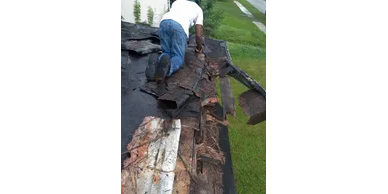
roof damage from rain
Moss can grow on roof surfaces that don’t get much sunlight, especially in cool, moist climates. Moss growth can be more than a cosmetic issue. Moss holds moisture against the roof surface and overtime in freezing climates can cause damage to the granules on the top of the shingles.
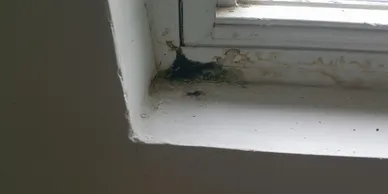
condensation from windows
The warm, indoor air can condense around cold, drafty window, making them “sweat” with moisture. That, in turn, causes the window sills and casings / trim to become damp and grow mold. Most vinyl window usually begin to near the end of it's efficiency
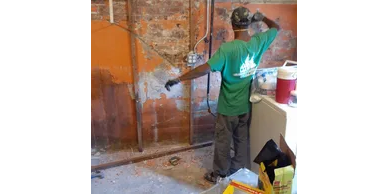
damp basement walls
In the summertime, basement windows may be opened for fresh air. If the outside air is warm and humidity, it will condense on the cool basement wall and floor surfaces. Many homeowners see this moisture and believe they are experiencing basement wall leakage, when in fact the accumulated moisture is from condensation.
















